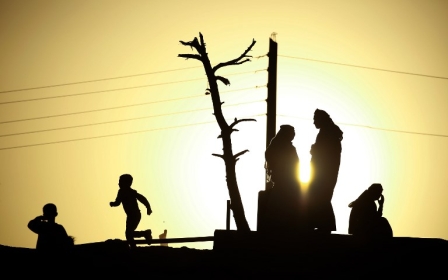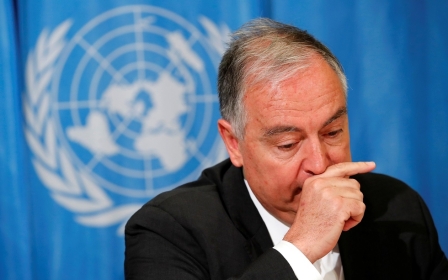Chemical weapons watchdog confirms new sarin attacks in Syria during 2017

The banned nerve agent sarin and chlorine were used in attacks in northern Syria last year, the global chemical weapons watchdog said on Wednesday.
It is the latest in a series of reports from the Organisation for the Prohibition of Chemical Weapons (OPCW) confirming the use of toxic agents in the country's civil war.
The OPCW is also investigating a suspected chemical attack on 7 April this year in the Douma enclave near Damascus, which prompted missile strikes by the United States, France and Britain against government positions.
It is expected to publish the results of that inquiry this month.
The OPCW said in a statement that sarin had been used south of the city of Ltamenah in the Hama area on 24 March 2017.
It also "concluded that chlorine was very likely used as a chemical weapon at Ltamenah Hospital and the surrounding area on 25 March 2017".
The findings in Ltamenah were based on witness testimony, epidemiological analysis and environmental samples, it said.
The OPCW did not assign blame for the attack. The Syria government denies using chemical weapons.
Syrian forces have used both sarin and chlorine, according to a UN-OPCW joint investigation, while rebel forces used sulphur mustard gas once.
Their so-called JIM mission was disbanded in November after a proposed renewal of its mandate was vetoed by Russia at the UN Security Council.
Meanwhile, a suicide car bomber from the Islamic State (IS) group killed at least six Hayat Tahrir al-Sham (HTS) militants on Wednesday at a roadblock in Syria's northwestern province of Idlib, a monitor said.
"A jihadist in a bomb-laden car blew himself up at a roadblock controlled by HTS fighters... killing six of them," said Rami Abdel Rahman, director of the Syrian Observatory for Human Rights.
HTS is led by Syria's former al-Qaeda branch.
New MEE newsletter: Jerusalem Dispatch
Sign up to get the latest insights and analysis on Israel-Palestine, alongside Turkey Unpacked and other MEE newsletters
Middle East Eye delivers independent and unrivalled coverage and analysis of the Middle East, North Africa and beyond. To learn more about republishing this content and the associated fees, please fill out this form. More about MEE can be found here.




